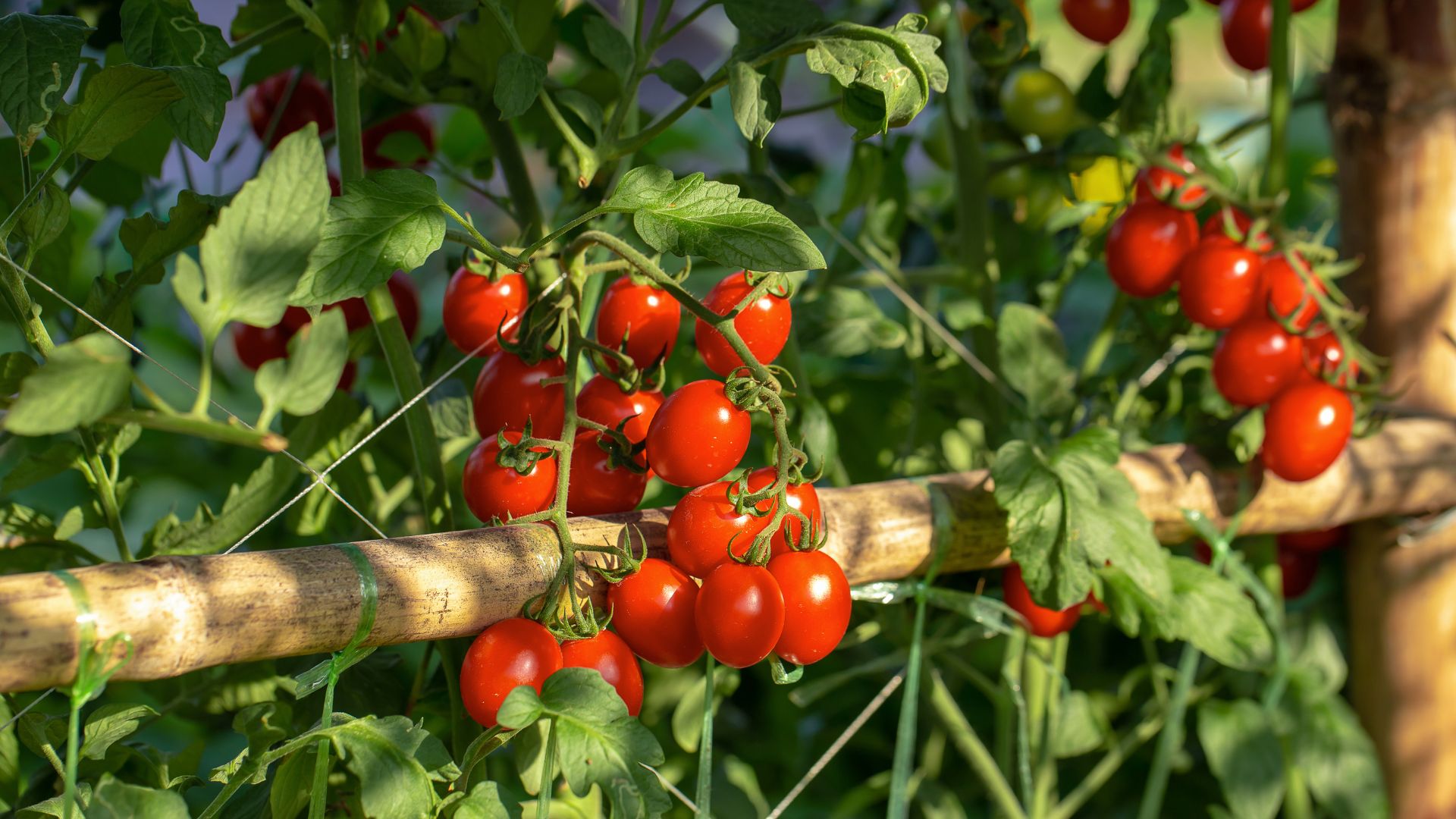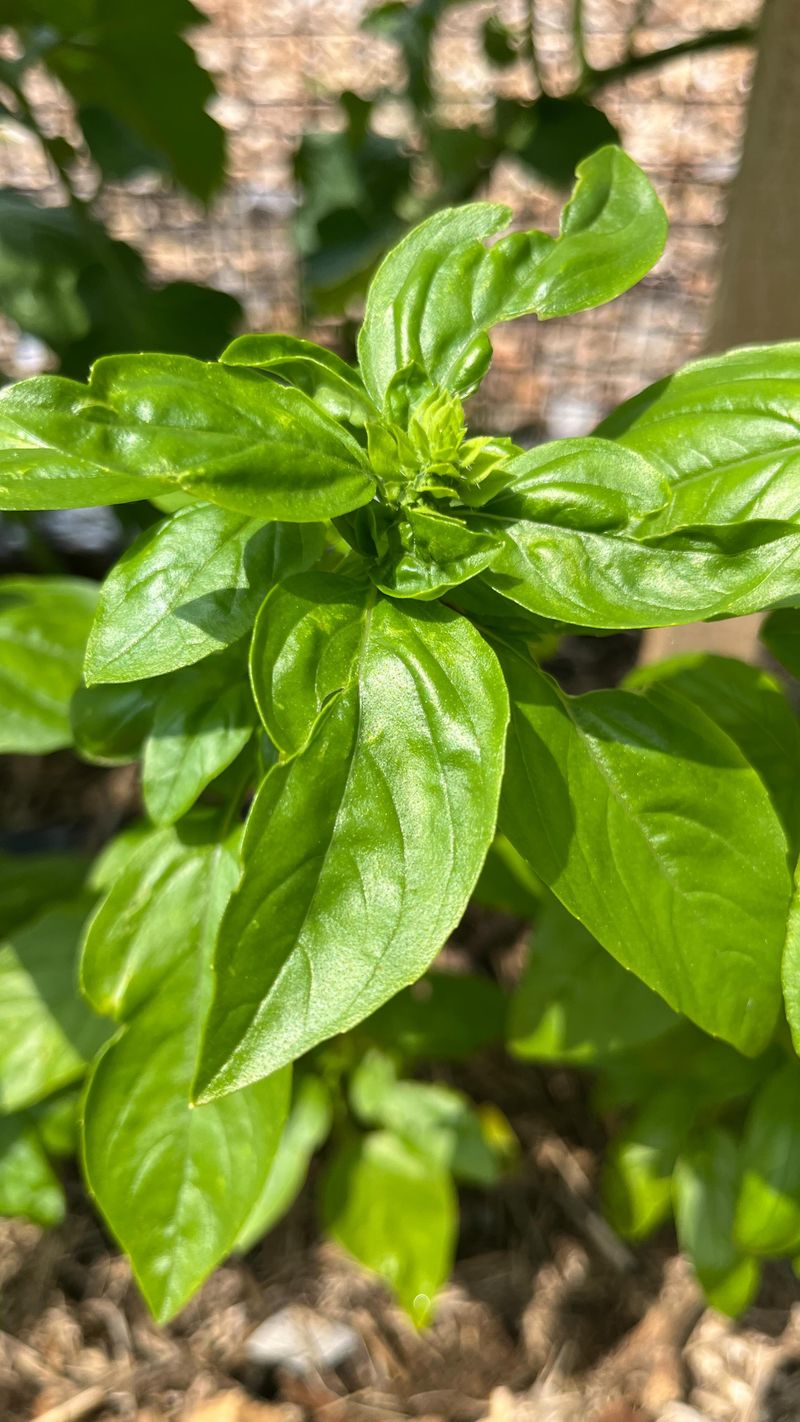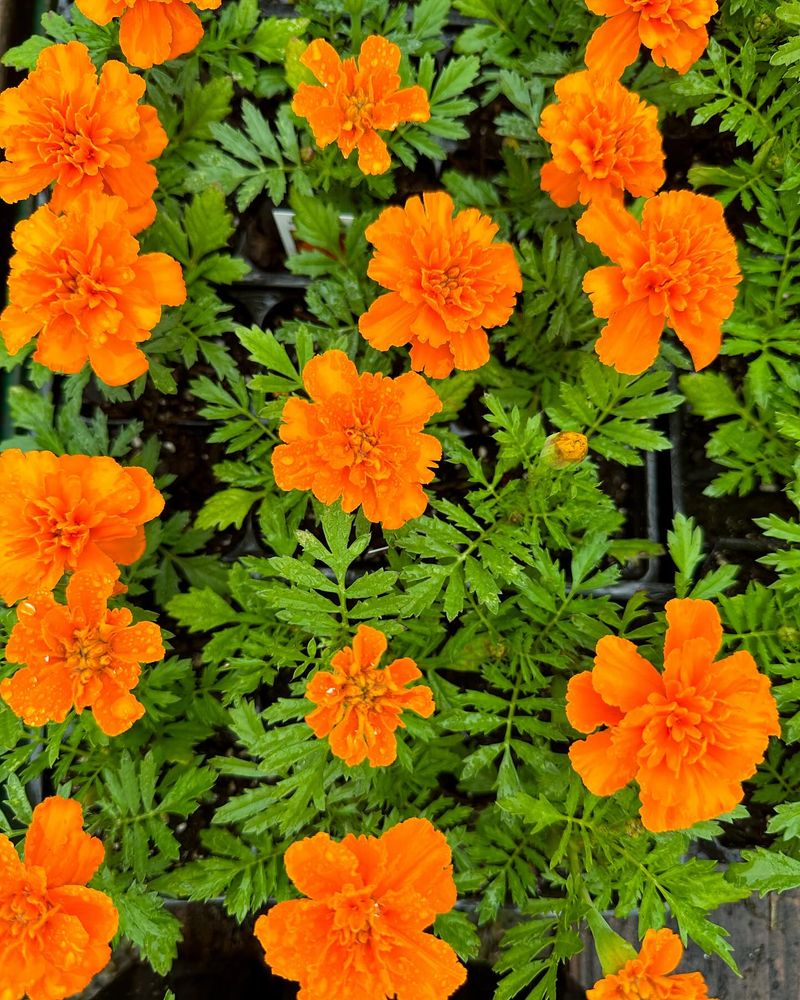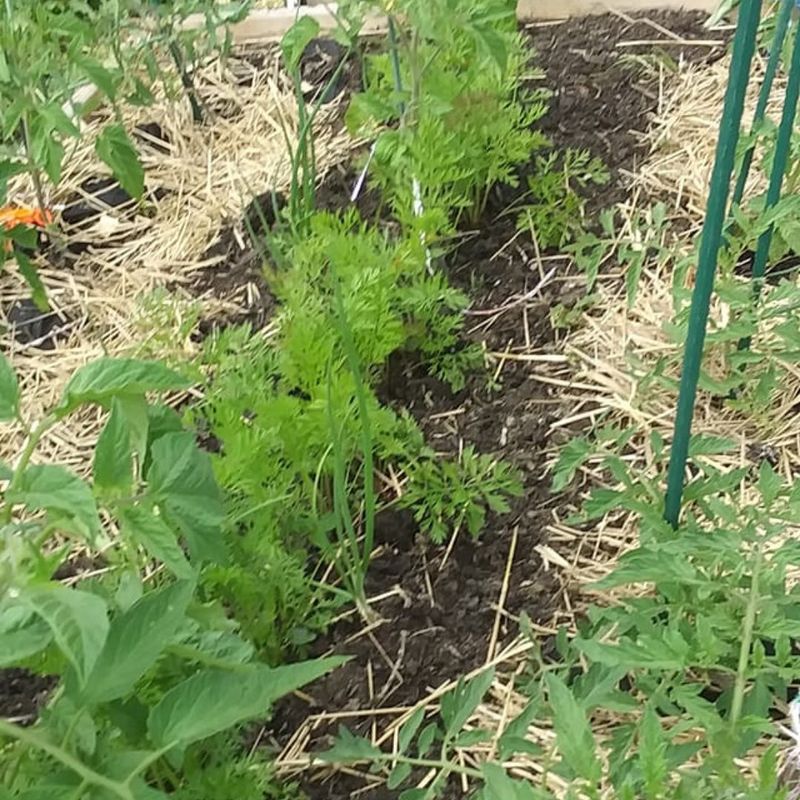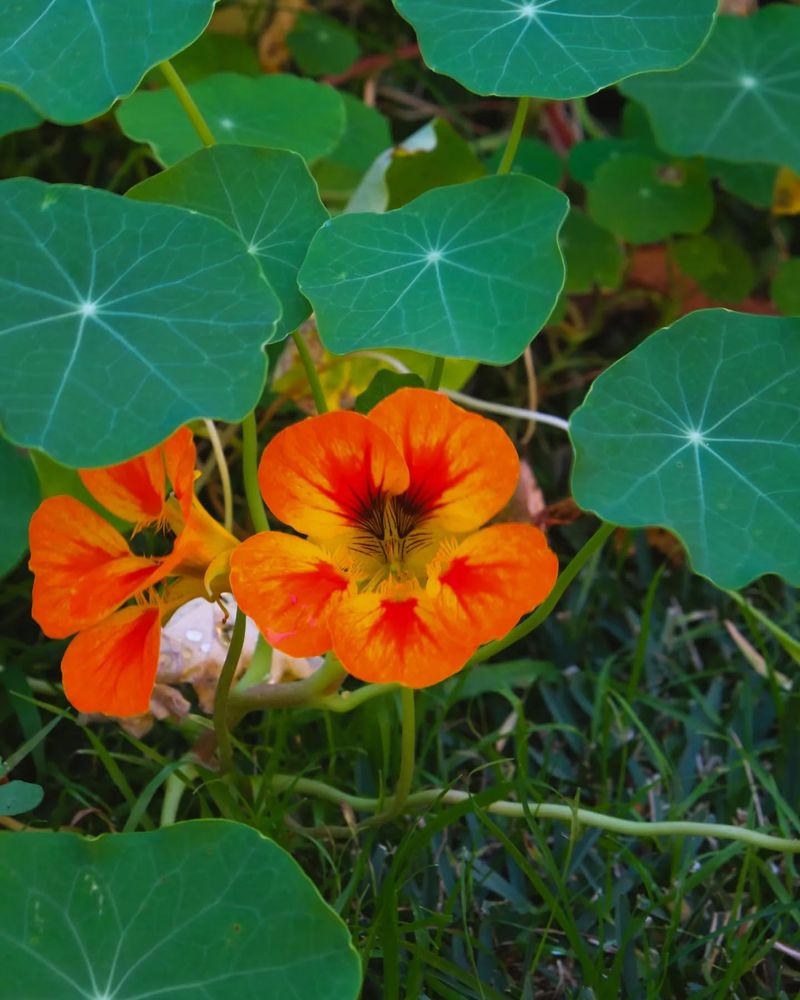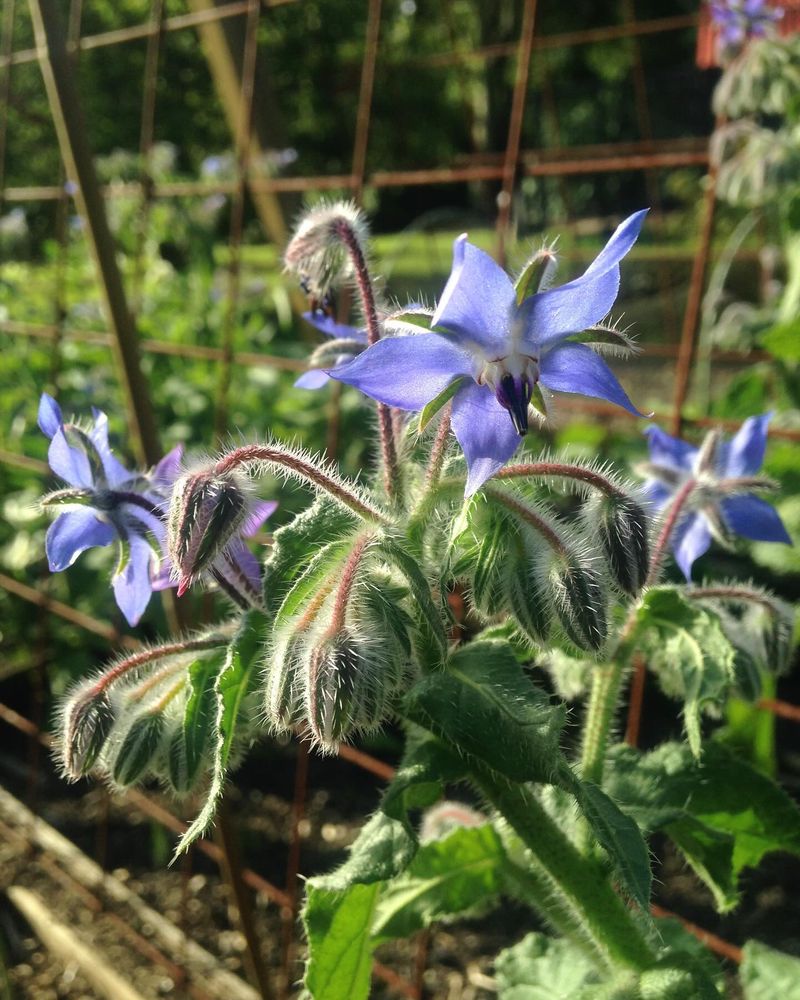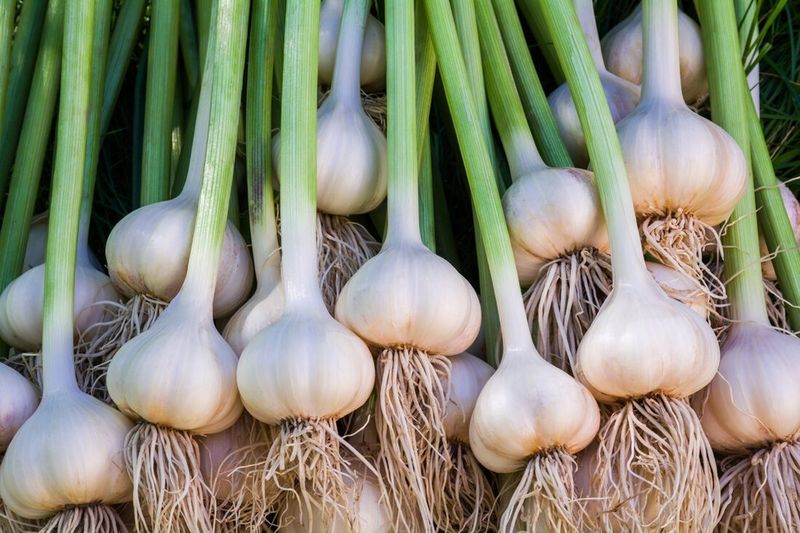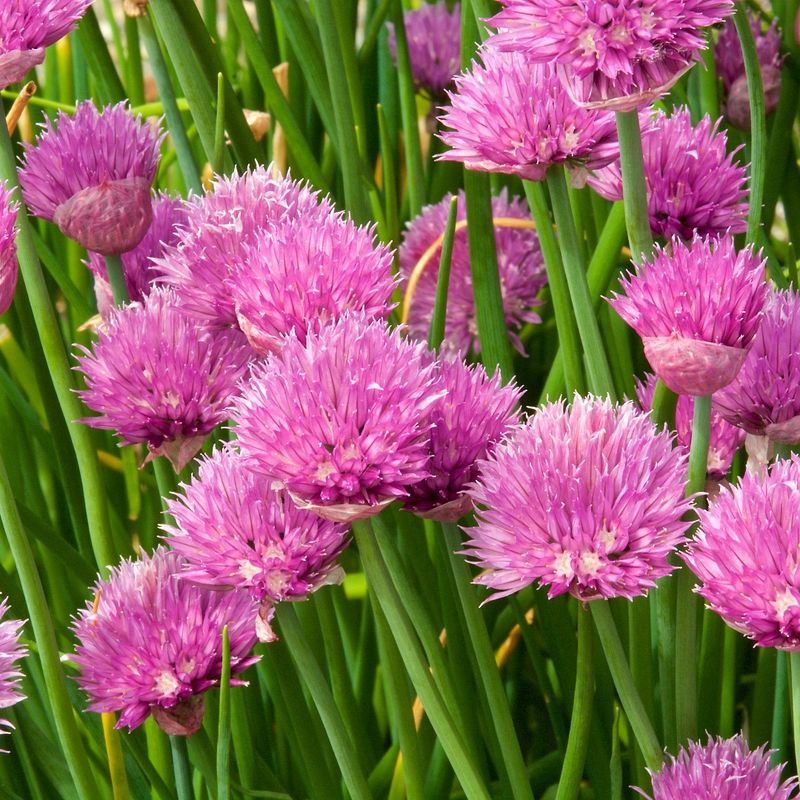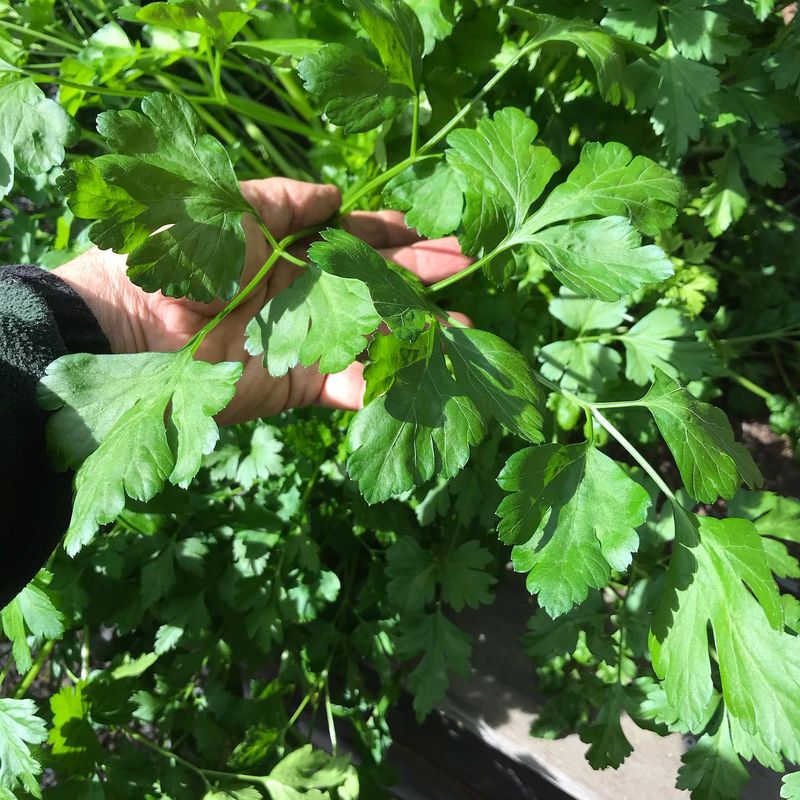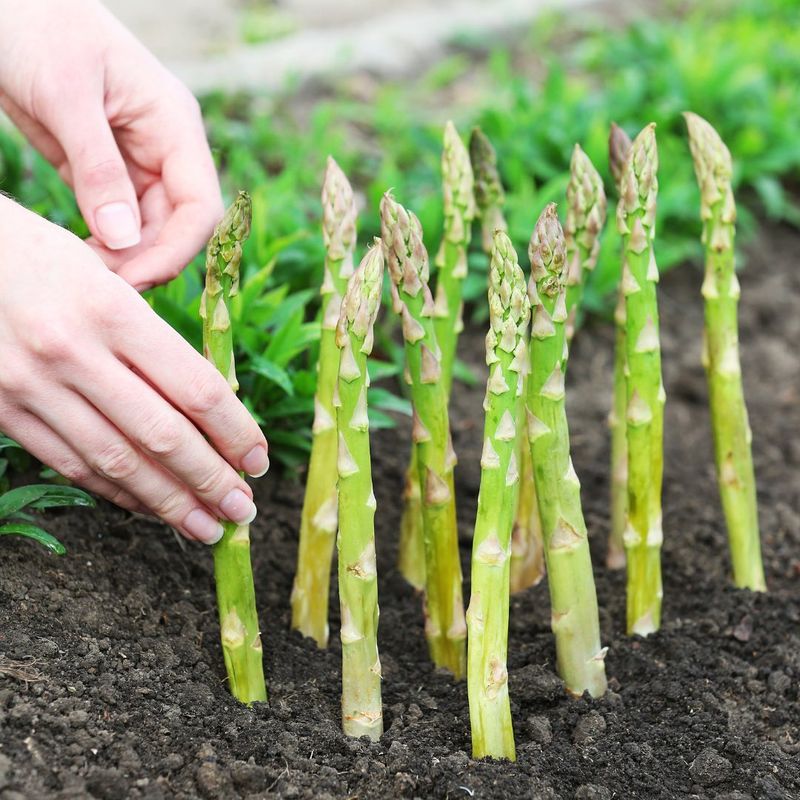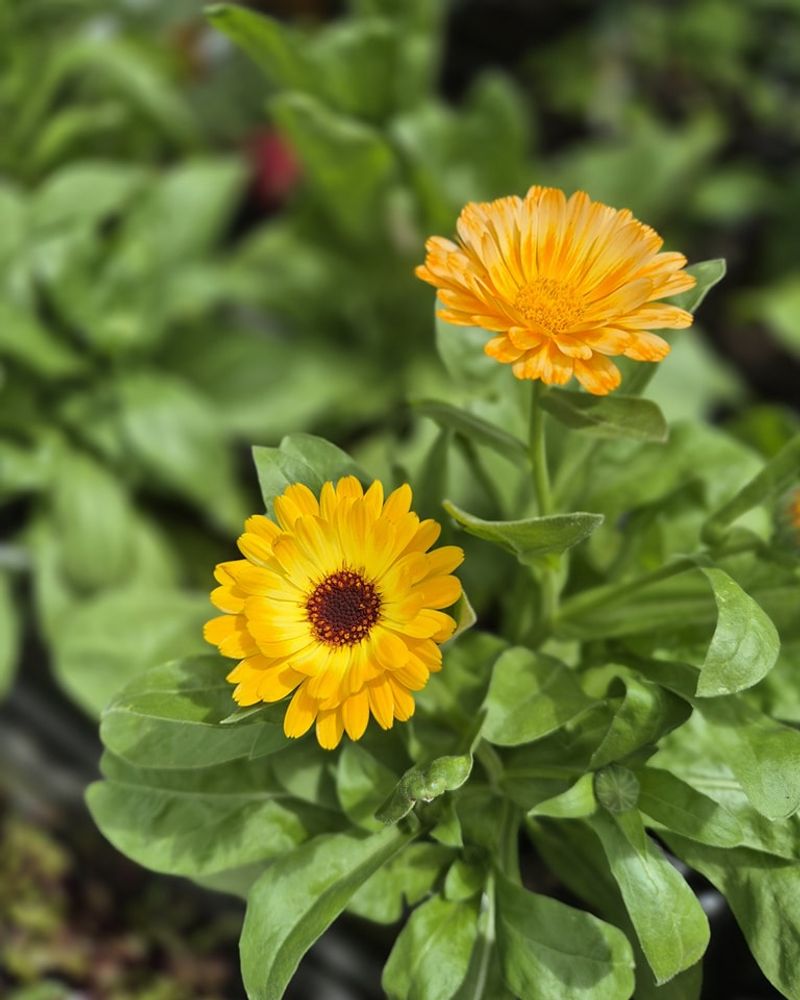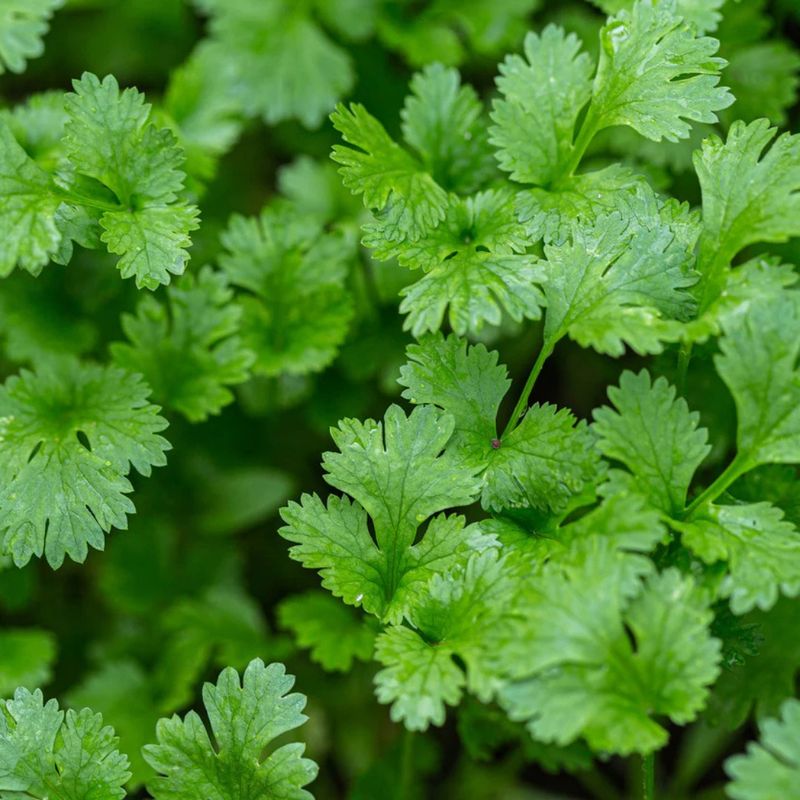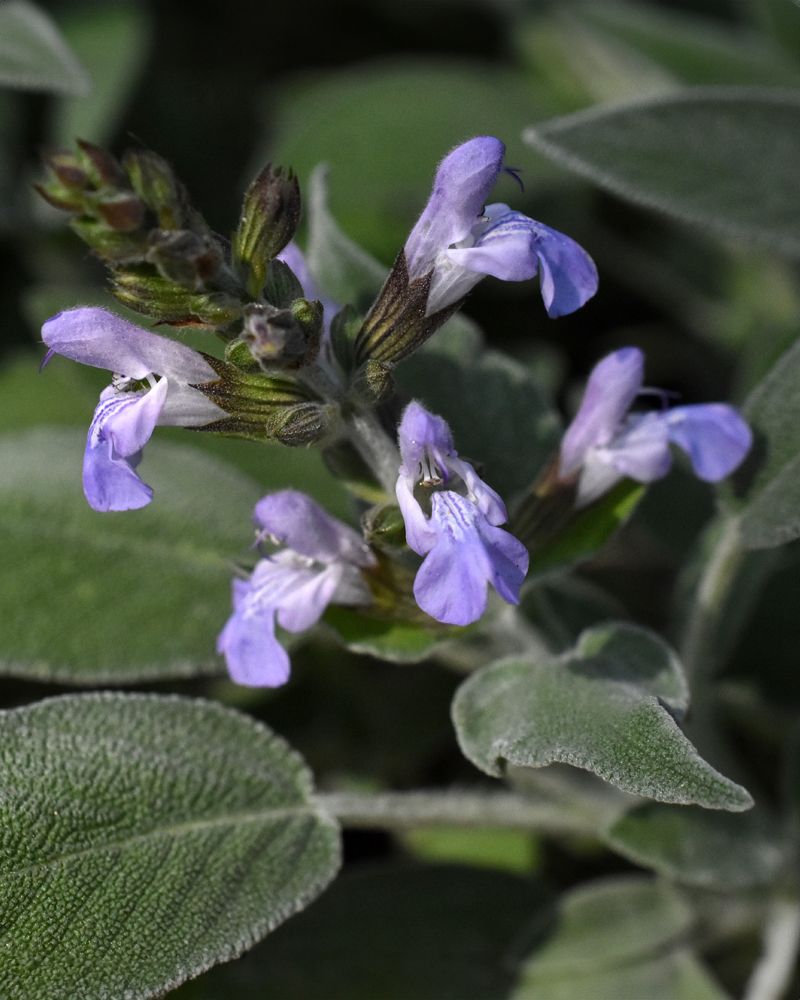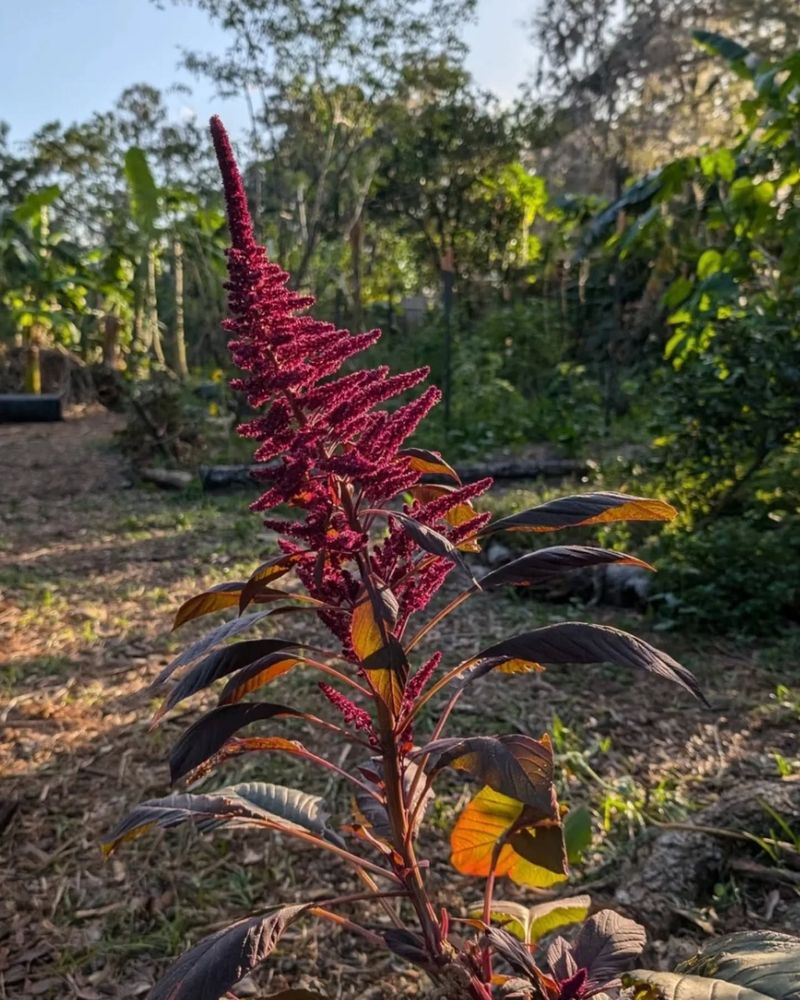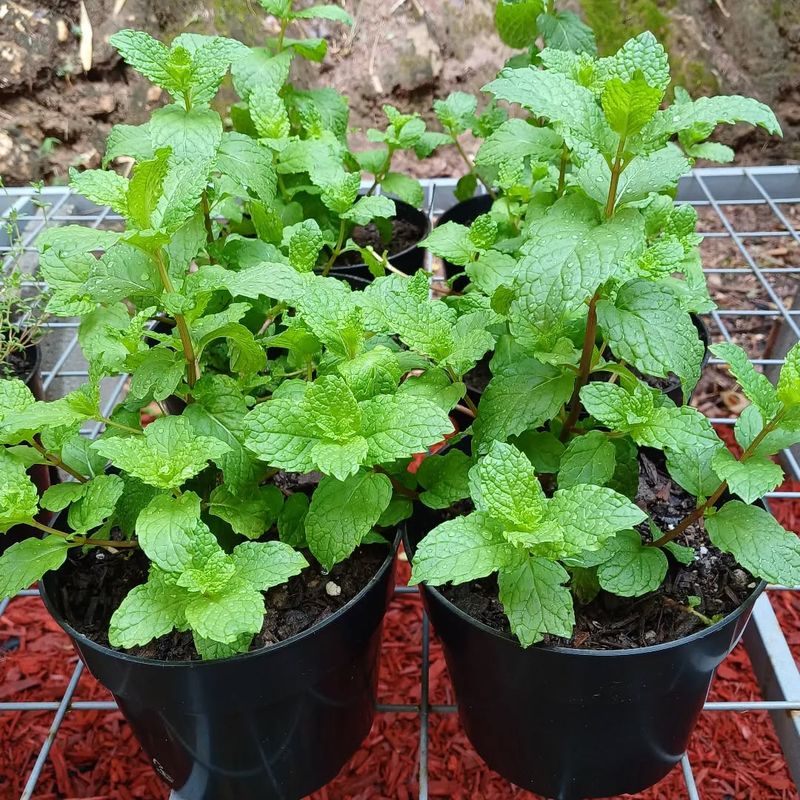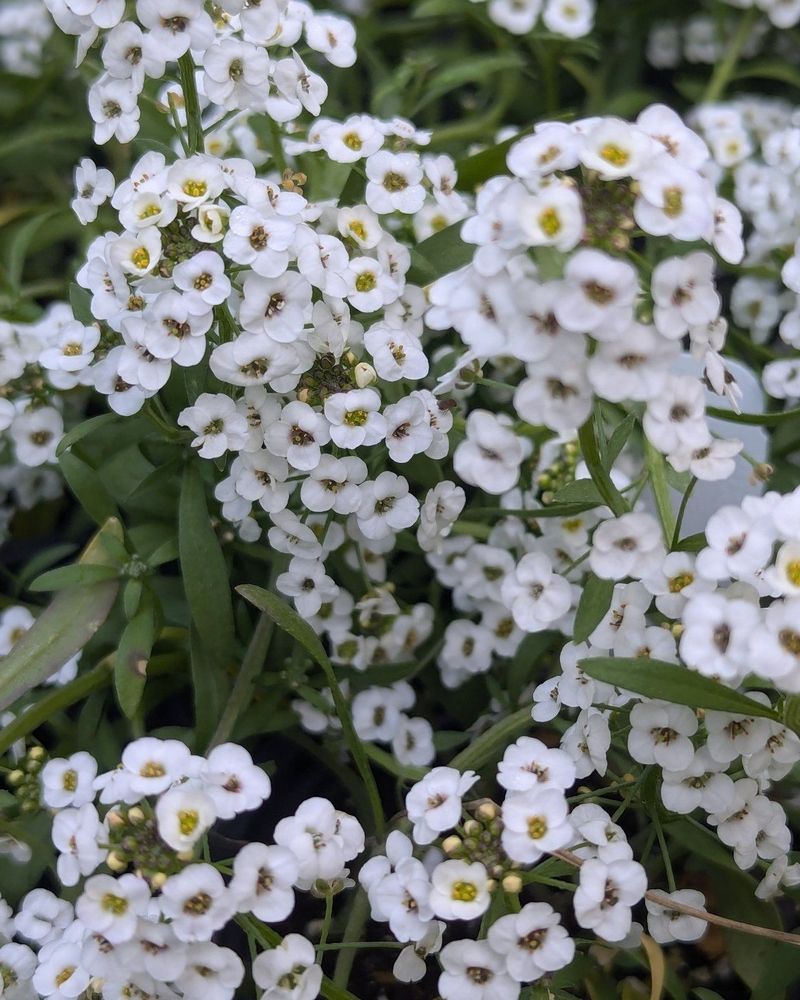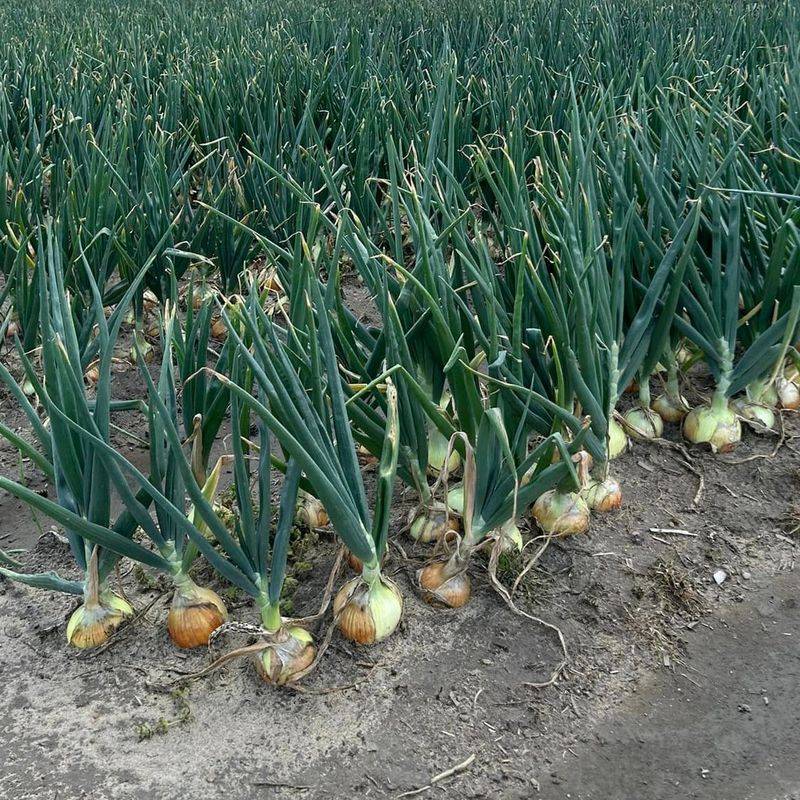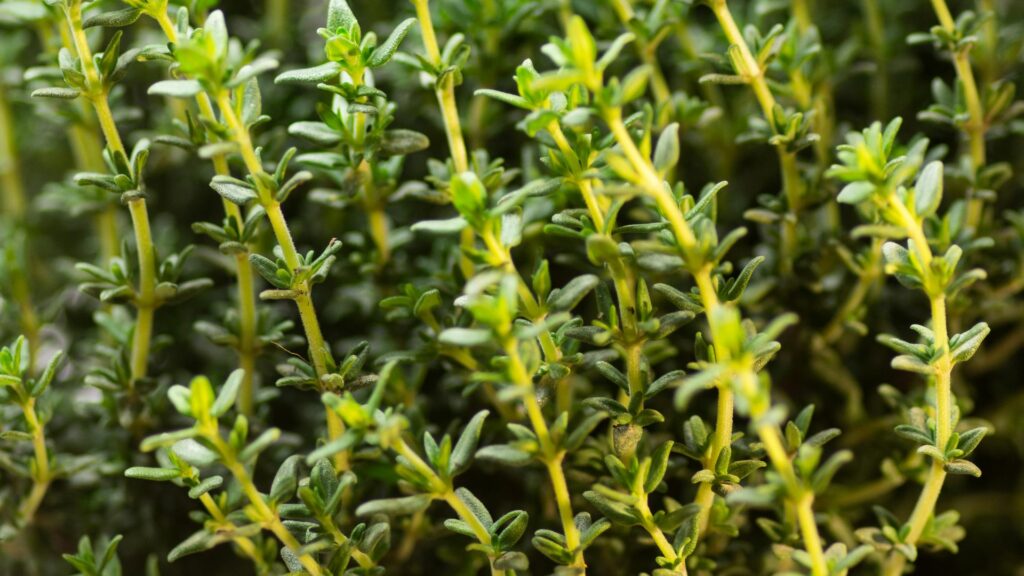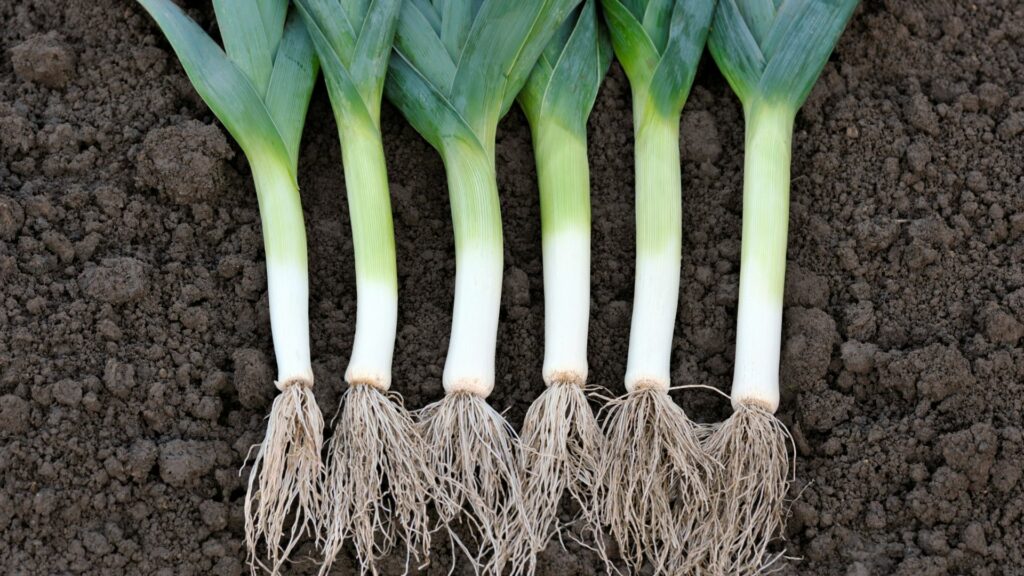I used to think tomatoes just needed sun and water—turns out, they’re a little more social than that. After planting a few of these companion crops nearby, my harvests got juicier and way more impressive.
Some of these plants are old favorites, others caught me off guard with how helpful they were. It’s like giving your tomatoes a group of loyal sidekicks.
If you’re chasing those big, flavorful tomatoes, these are the garden buddies they’ll thank you for!
1. Basil
Nothing enhances tomato flavor quite like having basil nearby. The aromatic oils repel flies and mosquitoes while improving growth and taste of your tomatoes.
Many gardeners swear basil planted within 18 inches of tomato plants results in juicier fruit. The relationship works both ways – tomatoes somehow make basil more flavorful too! Just one or two plants per tomato is enough to see the benefits.
2. Marigolds
These bright beauties work like underground security guards for your tomatoes. Their roots release chemicals that repel nematodes and other soil pests that would otherwise damage tomato roots.
French marigold varieties offer the strongest protection. Plant them in a border around your tomato patch for maximum effectiveness. As a bonus, their cheerful blooms add splashes of gold and orange to your vegetable garden throughout the growing season.
3. Carrots
Underground partnerships make gardening fascinating. Carrots’ deep roots break up soil compaction, creating channels that help tomato roots access nutrients and water more efficiently.
Since carrots grow downward and tomatoes grow upward, they peacefully share garden space without competing. For best results, sow carrot seeds between established tomato plants after danger of frost has passed. The shade from tomato leaves actually helps keep carrot tops cool during summer heat.
4. Nasturtiums
Got aphid problems? Nasturtiums act as a sacrificial trap crop, luring aphids away from your precious tomatoes. Their peppery scent confuses many pests that would otherwise target tomato plants.
The bright flowers aren’t just practical – they’re edible too! Add them to salads for a peppery kick. Plant nasturtiums about two feet from tomatoes, allowing their sprawling habit to create a colorful carpet beneath your tomato vines.
5. Borage
With its star-shaped blue flowers, borage isn’t just pretty – it’s a powerhouse companion for tomatoes. The plant attracts beneficial pollinators and predatory insects that help control tomato pests naturally.
Research suggests borage may even improve tomato flavor and growth. Its deep taproot brings up nutrients from lower soil layers, making them available to nearby plants. As a self-seeding annual, borage comes back year after year with minimal effort on your part.
6. Garlic
Vampires aren’t the only things repelled by garlic! This pungent bulb helps deter spider mites, aphids, and other common tomato pests through its strong sulfur compounds.
Fall-planted garlic works wonderfully alongside spring-planted tomatoes. By the time you harvest garlic in early summer, your tomatoes will be hitting their stride. For continuous protection, crush a garlic clove and mix it with water to make a natural spray for tomato leaves.
7. Chives
Slender and unassuming, chives pack a powerful punch against aphids and other soft-bodied insects that plague tomatoes. Their light onion scent confuses pests looking for tomato plants.
Beyond pest control, chives improve tomato flavor when planted nearby. Their pretty purple pom-pom flowers attract bees and other pollinators to your garden. Cutting chives regularly encourages fresh growth and releases more protective compounds into the surrounding soil.
8. Parsley
This humble herb attracts hoverflies whose larvae devour aphids that would otherwise attack your tomato plants. The flat, umbrella-shaped flower clusters are perfect landing pads for beneficial insects.
Flat-leaf varieties tend to grow more vigorously around tomatoes than curly types. Allow some parsley plants to flower for maximum insect attraction. As a biennial, parsley planted this year will produce seeds next year, ensuring continuous protection for future tomato crops.
9. Asparagus
Long-term garden planning pays off when pairing asparagus with tomatoes. These perennials release compounds that deter nematodes, microscopic worms that attack tomato roots.
The relationship works both ways – tomatoes repel asparagus beetles! Plant tomatoes at the edges of established asparagus beds. By the time asparagus ferns develop in summer, your tomatoes will be well on their way to producing fruit, creating a mutually beneficial relationship that can last for years.
10. Calendula
Often called pot marigold, calendula attracts pollinators while repelling tomato hornworms and other caterpillars. The bright orange and yellow flowers act as beacons for beneficial insects.
Calendula roots produce compounds that stimulate microbial activity in the soil, improving nutrient availability for nearby tomatoes. The edible petals add color to summer salads. For maximum benefit, plant calendula every few feet throughout your tomato patch rather than creating a separate border.
11. Cilantro
Love it or hate it for cooking, cilantro makes an excellent tomato companion. Its small white flowers attract parasitic wasps that lay eggs on tomato hornworms, naturally controlling these destructive pests.
Let some plants flower and go to seed (becoming coriander) while continuously sowing new seeds for a constant cilantro presence. The shallow roots don’t compete with tomatoes for nutrients. As a bonus, fresh cilantro is ready to harvest just when your first tomatoes ripen – perfect timing for homemade salsa!
12. Sage
Gray-green and aromatic, sage confuses tomato pests with its strong scent. Many gardeners report fewer problems with flea beetles and cabbage moths when sage grows nearby.
Unlike some herbs that need replacement each season, sage is a perennial that provides years of protection. Plant it at the corners of your tomato bed where it won’t shade shorter plants. The purple-blue flowers attract pollinators, while the leaves can be harvested for cooking throughout the growing season.
13. Amaranth
Tall and dramatic, amaranth serves as a trap crop for leaf-footed bugs and stink bugs that would otherwise attack tomatoes. These pests prefer amaranth, leaving your tomatoes relatively untouched.
The height of amaranth provides afternoon shade for tomatoes in hot climates. Plant on the western side of your tomato patch to block intense afternoon sun. As a bonus, you can harvest the protein-rich seeds or tender young leaves for your own meals.
14. Mint
Approach with caution – mint’s aggressive growth requires containment, but its benefits make it worthwhile. The strong aroma repels tomato pests including aphids, flea beetles, and even rodents.
Always plant mint in buried pots to control spreading. Place these mint containers near tomato plants but not directly in the same bed. Periodic trimming releases more aromatic oils into the air. Mint leaves can be harvested throughout summer for cooling drinks that complement fresh tomato dishes.
15. Alyssum
Carpet your tomato patch with this low-growing flower to attract hoverflies and parasitic wasps that control tomato pests. The tiny white blooms create a living mulch that keeps soil cool and moist.
Alyssum’s shallow roots don’t compete with tomatoes for nutrients. Scatter seeds between tomato plants after the last frost for continuous blooming all season. The sweet honey scent makes garden work more pleasant, while the white flowers create a striking contrast against the deep green of tomato plants.
16. Dill
Timing matters with this feathery herb. Early-season dill attracts beneficial predatory insects that hunt tomato pests, particularly aphids and spider mites.
However, keep mature dill away from tomatoes, as it can inhibit growth. The solution? Plant dill several weeks before tomatoes and harvest it young. For continuous benefits, stagger dill plantings every few weeks throughout spring. The yellow flower umbels become gathering spots for tiny beneficial wasps.
17. Onions
Strategic onion placement can significantly reduce pest problems in your tomato patch. Their pungent sulfur compounds deter many insects while taking up minimal space in the garden.
Green bunching onions work particularly well since they mature quickly and can be tucked between tomato plants. Plant them in a ring around each tomato or in alternating rows. The vertical growth habit of onions complements the bushier tomato plants, creating efficient use of garden space.
18. Thyme
Low-growing and wonderfully fragrant, thyme serves as a living mulch that keeps weeds down and soil moisture stable around tomato plants. It also repels tomato hornworms and whiteflies thanks to its essential oils.
Plant thyme around the base of tomatoes where it can spread without interfering with their growth. It thrives in the same sunny, well-drained conditions tomatoes love. Plus, snipping a few sprigs for roasting tomatoes or making marinades is a tasty bonus.
19. Leeks
Sharing the same pest-repelling family as onions and garlic, leeks fend off carrot flies, aphids, and even fungal diseases that affect tomatoes. Their strong aroma and upright growth make them ideal partners.
Leeks grow slowly and vertically, so they won’t crowd tomatoes or steal nutrients. Interplant them early in the season or start transplants in between tomato rows. As they mature, they’ll continue providing subtle protection without demanding attention.

